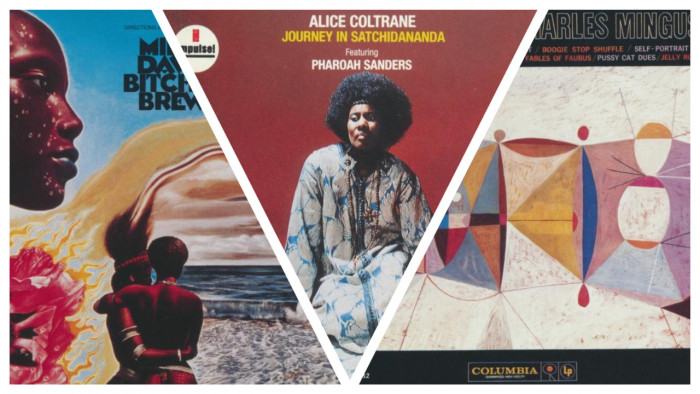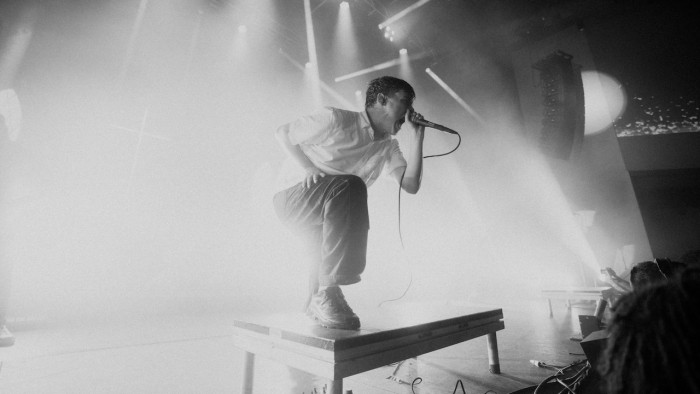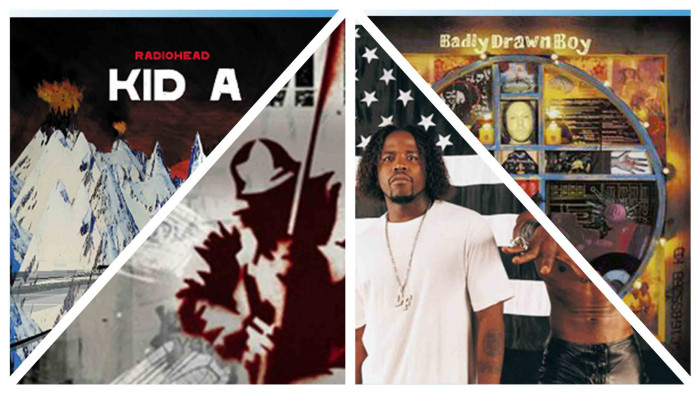13 incredible things that were invented in dreams
It turns out that sleep can be productive after all


What did your last dream consist of?
Running through treacle being chased by a dog before finally making it to play for England in the game you'd just been called up for, only you'd forgotten your boots, then your teeth began to fall out and you remembered that exam you had to sit which you haven't prepared for at all?
Yeah, us too.
Sometimes, however, dreams can be incredibly productive things, so much so that a host of amazing things have actually been invented while their creators were sleeping. Imagine that? Prepare to be awed at these 12 things that simply came to people in a dream.

The Sewing Machine
This is truly incredible, but the idea for the sewing machine came to inventor Elias Howe in a dream in 1845. He had been musing over the idea of a machine with a needle that would go through cloth, but hadn't managed to figure out exactly how it would work. However, a particularly lucid dream saw him about to be cooked by cannibals, while they were dancing around a fire, waving their spears. He noticed that at the top of each spear was a small hole, with the up-and-down motion of the spears and hole remaining fixed in his memory when he awoke. He realised that this could be the key to a machine that would work - having the hole in the needle close to the point, instead of the traditional other end, which enabled the mechanical sewing machine to become a technological possibility.

Yesterday
A song that has a genuine claim to being possibly the greatest ever written - it's certainly the most-covered - it was seemingly the result of a dream that Paul McCartney had while he was staying in his room at the Wimpole Street home of his then girlfriend Jane Asher and her family during the filming of Help! When he woke up, he thought the melody was simply him remembering an old song from his youth, but went to the piano to play it and embed it in his memory. According to the man himself: "For about a month I went round to people in the music business and asked them whether they had ever heard it before. Eventually it became like handing something in to the police. I thought if no one claimed it after a few weeks then I could have it." Initially having the words 'Scrambled Eggs', it eventually morphed itself into the song we - and pretty much everyone in the world - knows as Yesterday.

The Theory of Relativity
There's much debate about whether the inspiration for Albert Einstein's most famous theory - the mind-boggling intellectual area of Relativity - came to him in a dream, so much so that an entire work of fiction was created in 1992 by author Alan Lightman entitled Einstein's Dreams. Legend has it that Einstein dreamed one time that he was sledding down a mountainside at an enormous speed, which caused the stars to change their appearance. While, sadly, it's more probable that his ideas were the result of hard work and natural mathematic gifts, we can't rule out the idea that his remarkably capable brain was given a bit of help while he slept.

The Terminator
While the idea for The Terminator came to director James Cameron in a dream, we'd describe it as more of a nightmare. "I was sick and dead broke in Rome, Italy," he says, "with a fever of 102, doing the final cut of Piranha II. Thats when I thought of Terminator. I guess it was a fever dream." He saw a 'gleaming figure of doom emerging from fire: a metallic, skeletal monster with a rictus smile and burning red eyes, dragging itself across the floor with kitchen knives'. We're surprised he ever went to sleep again.

Mary Shelley's Frankenstein
Mary Wollstonecraft Shelley wrote, in the introduction to her 1818 novel Frankenstein's Monster how, when she went to bed, while visiting the poet Lord Byron with her lover Percy Shelley, "When I placed my head upon my pillow, I did not sleep, nor could I be said to think... I saw - with shut eyes, but acute mental vision - I saw the pale student of unhallowed arts kneeling beside the thing he had put together. I saw the hideous phantasm of a man stretched out, and then, on the working of some powerful engine, show signs of life, and stir with an uneasy, half-vital motion. Frightful must it be; for supremely frightful would be the effect of any human endeavor to mock the stupendous Creator of the world." And thus, a horror classic was born. Sleep with one eye open tonight people.

The Double Helix structure of DNA
Another scientific discovery on this list. It's almost like you're better off not bothering to actually do any thinking isn't it? Just wait until it comes to you in a dream. Anyway, James Watson, who together with Francis Crick, discovered the double helix structure of DNA - the building blocks of life - seemingly dreamed of a spiral staircase, ultimately planting the seed of an idea for how DNA might be constructed. Other reports say that he dreamed of two intertwined serpents with heads at opposite ends which - if we're honest - is a lot cooler.

(I Can't Get No) Satisfaction
Legendary guitarist Keith Richards recorded the rough version of the famous riff to this song in a hotel room at the Fort Harrison Hotel in Clearwater, Florida, playing it just once before falling asleep. Listening back to the recording the next morning, he heard two minutes of acoustic guitar, the sound of him dropping his pick and "then me snoring for the next forty minutes". Rock 'n' roll moves in mysterious ways Keef...

Benzene
It's not just Watson and DNA - the scientist Friedrich August Kekulé spoke at a 1890 celebration of his discovery of the chemical structure of the benzene molecule 25 years previously and revealed that he had formulated the ring shape after having a reverie, or daydream, of a snake swallowing its own tail. He said that the vision had come to him after many years of studying the nature of carbon-carbon bonds. Serpents, snakes and dreaming - that's the key to making a breakthrough in science.

The Strange Case of Dr. Jekyll and Mr. Hyde
Robert Louis Stevenson had long had the idea to write a story around the idea of personalities affecting humans and, after racking his brains for a plot, had a dream and, upon awakening, had formulated three scenes that would appear in The Strange Case of Dr. Jekyll and Mr. Hyde. His wife Fanny stated, "In the small hours of one morning,[...]I was awakened by cries of horror from Louis. Thinking he had a nightmare, I awakened him. He said angrily: "Why did you wake me? I was dreaming a fine bogey tale." I had awakened him at the first transformation scene." Another lesson: never wake a sleeping author - he might be busy writing a classic story.

Twilight
Look, we never said it was all good things that were invented in dreams. Stephenie Meyer claims that the idea for her hugely-successful Twilight franchise came to her in a dream on 2 June 2003. She dreamed of a human girl and a vampire who loved her but still wanted her blood, and quickly set about writing the draft of what is now Chapter 13 in the book.

Tintin in Tibet
Belgian cartoonist Hergé was going through a difficult time, being plagued by nightmares where he was continually chased by a white skeleton, before the whole environment turned white. While his psychiatrist instructed him to take a break from making comics, he instead used the dream as inspiration for a new story for Tintin, set in the snowy mountains of Tibet. The nightmares promptly stopped, and the work is regarded as one of his finest.

Misery
When asked where the inspiration for King's famous 1987 novel came from, he revealed that it wasn't based on a real-life incident, but that it, "came to me in a dream. In fact, it happened when I was on Concord, flying over here [the UK], to Brown's. I fell asleep on the plane, and dreamt about a woman who held a writer prisoner and killed him, skinned him, fed the remains to her pig and bound his novel in human skin. His skin, the writer's skin. I said to myself, 'I have to write this story.' Of course, the plot changed quite a bit in the telling. But I wrote the first forty or fifty pages right on the landing here, between the ground floor and the first floor of the hotel."
He has also stated that, "I've always used dreams the way you'd use mirrors to look at something you couldn't see head-on, the way that you use a mirror to look at your hair in the back. To me that's what dreams are supposed to do. I think that dreams are a way that people's minds illustrate the nature of their problems. Or maybe even illustrate the answers to their problems in symbolic language."

The Scientific Method
Bit of a biggy this one. René Descartes helped established the framework for scientific method's guiding principles in his treatise, Discourse on the Method for Guiding One’s Reason and Searching for Truth in the Sciences, published in 1637, crystallising the modern scientific method which, of course, led to all the great discoveries and advancements that followed. But he would not have written it at all had he not dreamt one night - during a stint in the army - of a new project for his life: to rejecting everything he had been taught was true, and building it back up on an arguable, firm foundation. Descartes' four principles were to doubt everything, break every problem down into smaller parts, solve the simplest problems first (and build from there) and to be thorough. The one thing he didn't - or couldn't - doubt? That he existed. Thus, his famous phrase: "I think, therefore I am."








